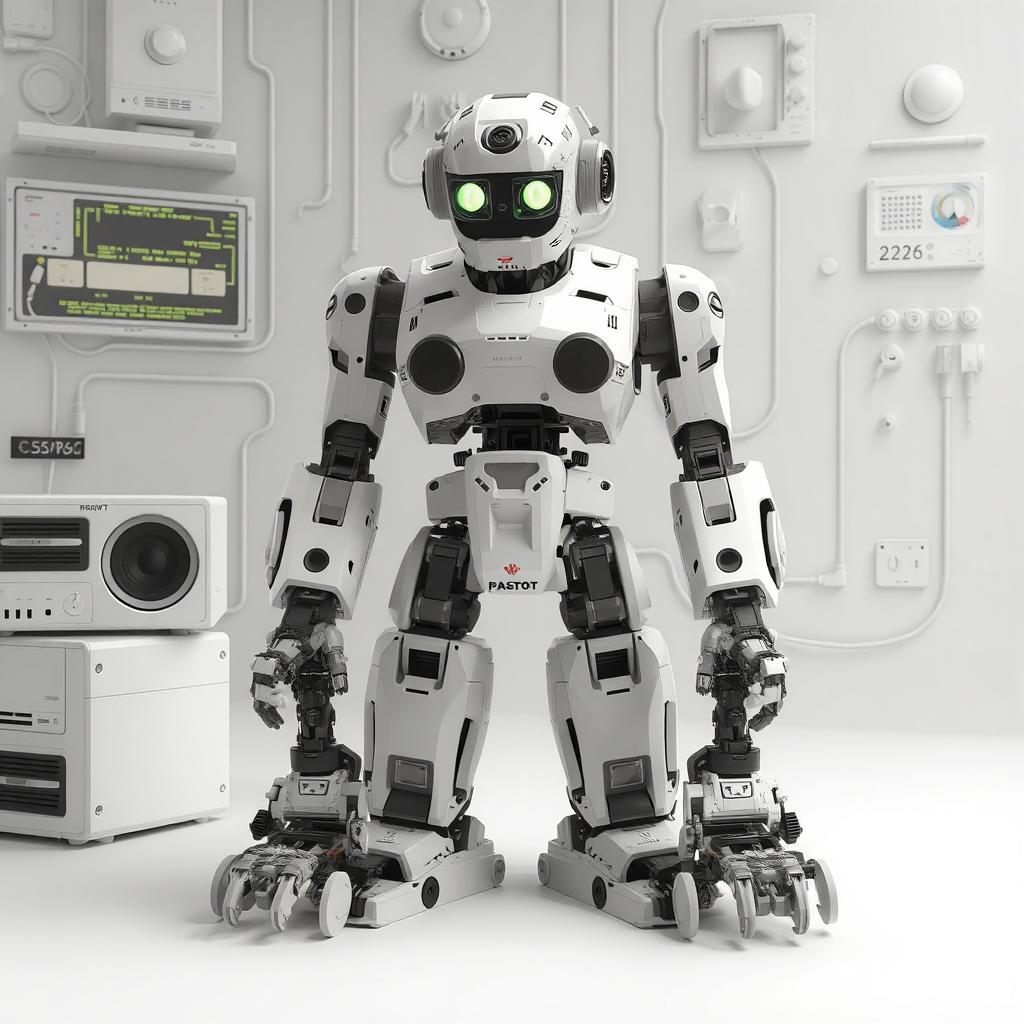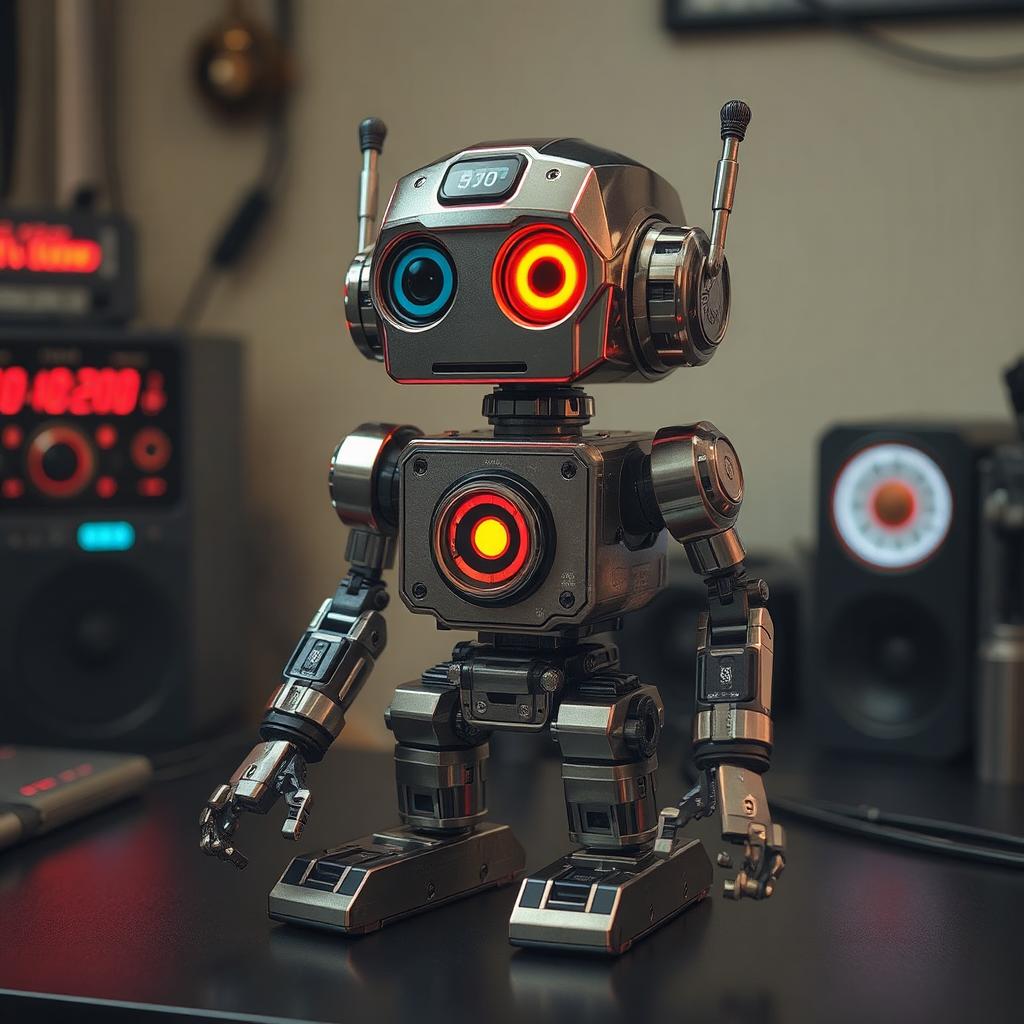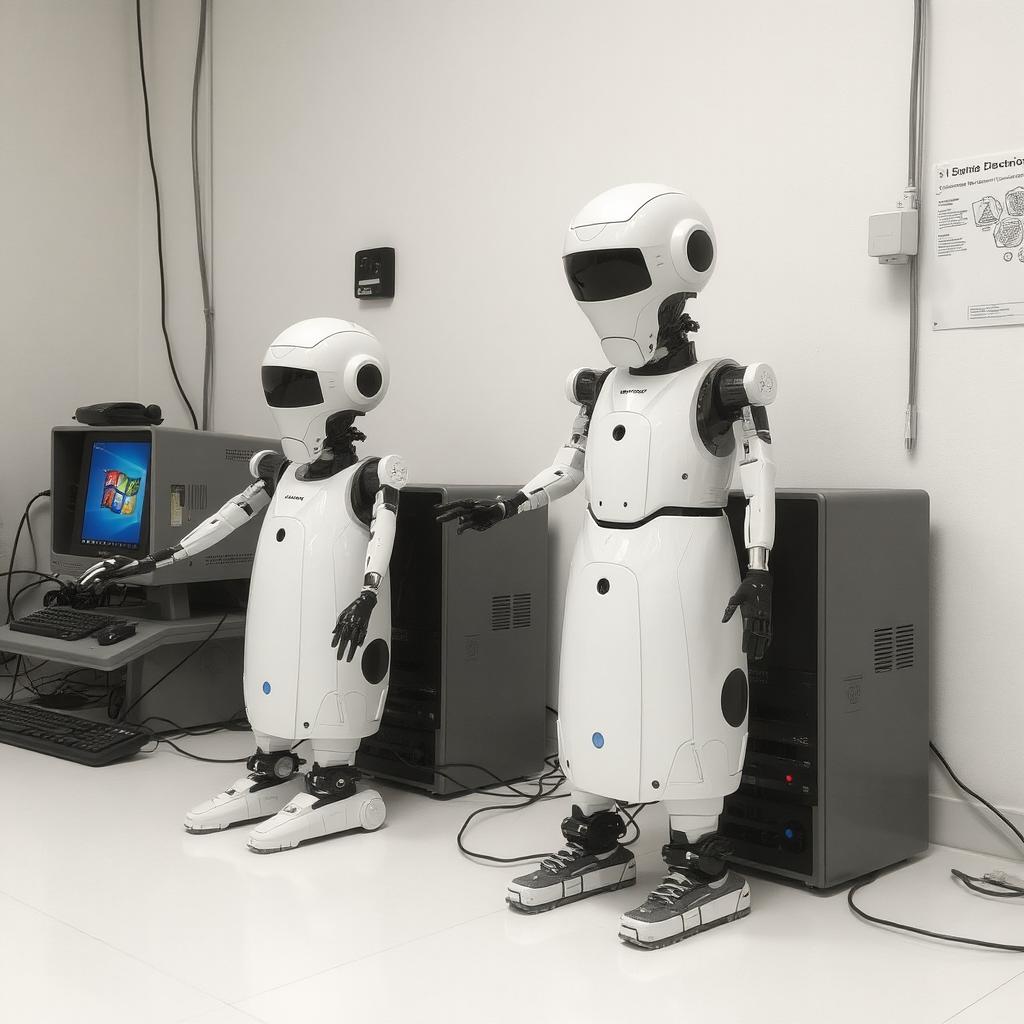Robotics is a fascinating and rapidly evolving field that intertwines engineering, artificial intelligence, and computer science to create machines capable of performing tasks that once seemed exclusive to humans. From the automated assembly lines in factories to sophisticated robots exploring Mars, robotics has become an integral part of modern society, driving innovation and redefining our understanding of technology. In the past few decades, the advancements in robotics have transformed industries, improved the quality of life, and expanded the boundaries of what machines can achieve.
The roots of robotics date back centuries, with early automata designed for entertainment and mechanical tasks. Today, robotics encompasses a broad spectrum of technologies, including humanoid robots, industrial robots, autonomous vehicles, and medical robots. This expansion has opened doors to new possibilities, such as personalized healthcare, precision agriculture, and intelligent disaster response systems. Robotics is not merely about building machines; it is about pushing the boundaries of human ingenuity to address complex challenges and enhance capabilities.

This article delves deep into the world of robotics, exploring its history, modern advancements, applications, and its potential to shape the future. We’ll also uncover ten exclusive facts about robotics, provide answers to 30 frequently asked questions, and offer a thoughtful conclusion on the transformative potential of this field. By understanding robotics, we can better appreciate its impact on our lives and the opportunities it presents for innovation and societal progress.
Table of Contents
Exploring the World of Robotics – Advancements, Applications, and the Future.
Top 10 Exclusive Facts About Robotics.
Careers in Robotics and Their Salaries.

Fujifilm X-S20 26.1MP Camera – APSC X-Trans Sensor | AI Deep Learning| IBIS System
Available at Discount of 14% at ₹1,27,000
Top 10 Exclusive Facts About Robotics
- Origin of the Term: The term “robot” was first coined by Czech playwright Karel Čapek in his 1920 play “R.U.R.” (Rossum’s Universal Robots), derived from the Czech word “robota,” meaning forced labor.
- Oldest Robot: The earliest recorded automaton is a programmable humanoid robot created by Al-Jazari in the 13th century, designed to serve drinks at royal banquets.
- First Industrial Robot: The Unimate, introduced in 1961, was the world’s first industrial robot used by General Motors to handle hot die-cast metal.
- Robots on Mars: NASA’s robotic rovers, including Spirit, Opportunity, and Perseverance, have explored the Martian surface, gathering invaluable scientific data.
- Robot Density: South Korea has the highest robot density in the world, with over 900 industrial robots per 10,000 workers.
- Medical Milestones: The da Vinci Surgical System, a robotic surgical tool, performs precise and minimally invasive surgeries worldwide.
- AI Integration: Modern robots, like Boston Dynamics’ Spot, incorporate advanced AI, enabling them to learn, adapt, and perform complex tasks autonomously.
- Disaster Response: Robots such as PackBots have been deployed for search-and-rescue missions in disaster zones, including the Fukushima nuclear disaster.
- Soft Robotics: Soft robots, made from flexible materials, mimic natural organisms, offering potential applications in medicine and wearable devices.
- Ethical Concerns: The rise of robotics has spurred debates on ethics, particularly concerning job displacement, privacy, and the development of autonomous weapons.
Applications of Robotics
- Healthcare: Robotics is revolutionizing healthcare with surgical robots, robotic prosthetics, and patient-assistive technologies. Examples include robotic exoskeletons aiding mobility and AI-powered diagnostic tools.
- Manufacturing: Industrial robots dominate manufacturing, performing tasks like welding, assembling, and quality inspection with speed and precision.
- Space Exploration: Robotics enables us to explore distant planets and celestial bodies, with robots like the Mars rovers conducting experiments in extreme conditions.
- Agriculture: Robots in agriculture, such as autonomous tractors and drones, optimize planting, harvesting, and monitoring crop health.
- Education and Research: Educational robots engage students in STEM fields, while research robots aid in scientific discoveries across disciplines.
- Service Industry: Robots are increasingly used in service roles, including hospitality, cleaning, and customer assistance.
- Defense and Security: Military robots assist in reconnaissance, bomb disposal, and other high-risk operations, while security robots patrol premises.
- Entertainment: Robots feature in entertainment, from animatronics in theme parks to robotic actors and musicians.
- Logistics and Supply Chain: Warehouse robots streamline inventory management, packaging, and shipping processes for e-commerce giants.
- Personal Assistance: Domestic robots, such as vacuum cleaners and robotic companions, enhance convenience and improve lifestyles.
Top 30 FAQs About Robotics
- What is robotics?
Robotics is the interdisciplinary study and application of robots, combining engineering, computer science, and artificial intelligence to create machines that can perform tasks autonomously or semi-autonomously.

- Who invented the first robot?
The first modern robot, Unimate, was invented by George Devol in 1954 and later commercialized by Joseph Engelberger.
- What are robots made of?
Robots are typically made of mechanical components (gears, motors), electronic parts (sensors, processors), and software that controls their operations.
- What is the role of AI in robotics?
AI enhances robotics by enabling robots to learn, adapt, and make decisions, facilitating more complex and intelligent behaviors.
- How do robots sense their environment?
Robots use sensors, such as cameras, LiDAR, ultrasonic sensors, and accelerometers, to perceive their surroundings and interact effectively.
- What industries use robotics the most?
Manufacturing, healthcare, logistics, agriculture, and defense are among the industries that heavily rely on robotics.
- Can robots replace humans?
While robots can perform repetitive and hazardous tasks, they are unlikely to fully replace humans due to limitations in creativity, empathy, and complex problem-solving.
- What is the most advanced robot today?
Robots like Boston Dynamics’ Atlas and AI-powered humanoid robots like Sophia are among the most advanced, showcasing impressive mobility and interaction capabilities.
- What is soft robotics?
Soft robotics involves building robots from flexible, compliant materials that mimic biological organisms, ideal for delicate tasks and interactions.
- What are the ethical issues in robotics?
Ethical concerns include job displacement, privacy, the misuse of robots in warfare, and ensuring equitable access to robotic technologies.
- What is swarm robotics?
Swarm robotics is a field inspired by the collective behavior of social animals, focusing on creating large groups of simple robots that work together to achieve tasks.
- What are autonomous robots?
Autonomous robots operate without human intervention, making decisions based on data from their sensors and pre-programmed instructions.
- How are robots used in education?
Robots in education teach coding, problem-solving, and robotics concepts, fostering engagement in STEM fields.
- What is the future of robotics?
The future of robotics includes more sophisticated AI integration, human-robot collaboration, and advancements in fields like nanorobotics and biohybrid robots.
- What are humanoid robots?
Humanoid robots are designed to resemble and mimic human appearance and behavior, used in research, healthcare, and customer service.
- Can robots learn?
Robots equipped with machine learning algorithms can learn from data and experiences to improve their performance over time.
- What is the importance of robotics in healthcare?
Robotics enhances healthcare with precise surgical tools, assistive devices, and diagnostic systems, improving patient outcomes.
- How are robots programmed?
Robots are programmed using coding languages such as Python, C++, and ROS (Robot Operating System) to define their behaviors and responses.

- What is a robotic arm?
A robotic arm is a programmable mechanical device that mimics the motion of a human arm, widely used in manufacturing and surgery.
- What is the difference between a robot and a machine?
While all robots are machines, not all machines are robots. Robots have sensors, processors, and the ability to perform tasks autonomously or semi-autonomously.
- What is teleoperation?
Teleoperation refers to controlling robots remotely, often used in hazardous environments or for delicate tasks.
- How are robots tested?
Robots undergo rigorous testing in controlled environments to ensure functionality, safety, and reliability.
- What is the impact of robotics on employment?
Robotics can displace certain jobs while creating new opportunities in robot development, maintenance, and oversight.
- What are robotic exoskeletons?
Robotic exoskeletons are wearable devices that augment human strength and mobility, aiding in rehabilitation and industrial tasks.
- How do robots navigate?
Robots use algorithms and technologies like GPS, SLAM (Simultaneous Localization and Mapping), and sensor data to navigate environments.
- What is collaborative robotics?
Collaborative robots, or cobots, are designed to work alongside humans, enhancing efficiency and safety in shared workspaces.
- What materials are used in robotics?
Common materials include metals, plastics, and composite materials for durability, flexibility, and lightweight properties.
- What is robotic vision?
Robotic vision involves equipping robots with cameras and image-processing algorithms to interpret visual data and make decisions.
- How are robots powered?
Robots are powered by batteries, electricity, or hydraulic systems, depending on their size and application.
- What is the significance of robotics in space exploration?
Robotics plays a crucial role in space exploration by performing tasks that are dangerous or impossible for humans, such as exploring other planets and maintaining satellites.
Careers in Robotics and Their Salaries
The robotics industry offers a diverse range of career opportunities across various sectors, including engineering, research, software development, and project management. Below are some prominent job roles in robotics, along with their average salaries (based on global estimates):
1. Robotics Engineer
Role: Designing, building, and maintaining robotic systems for various applications.
Average Salary: $85,000–$120,000 per year.
2. Automation Engineer
Role: Implementing robotic solutions to automate industrial processes.
Average Salary: $70,000–$100,000 per year.
3. Software Developer (Robotics)
Role: Writing and optimizing code for robot functionality and artificial intelligence.
Average Salary: $80,000–$115,000 per year.
4. Research Scientist (Robotics and AI)
Role: Exploring new technologies, algorithms, and methodologies in robotics and artificial intelligence.
Average Salary: $90,000–$130,000 per year.
5. Robotics Technician
Role: Assembling, repairing, and maintaining robotic equipment.
Average Salary: $50,000–$70,000 per year.
6. Control Systems Engineer
Role: Designing control systems that enable robots to perform specific tasks.
Average Salary: $75,000–$110,000 per year.

7. Data Scientist (Robotics)
Role: Analyzing and interpreting data collected by robots for optimization and improvements.
Average Salary: $95,000–$130,000 per year.
8. Human-Robot Interaction Designer
Role: Developing interfaces and systems that facilitate interaction between humans and robots.
Average Salary: $85,000–$120,000 per year.
9. Robotics Professor/Educator
Role: Teaching robotics principles and conducting research in academic settings.
Average Salary: $70,000–$140,000 per year (depending on institution and country).
10. Project Manager (Robotics)
Role: Overseeing robotics projects, including timelines, budgets, and team coordination.
Average Salary: $90,000–$130,000 per year.
11. Embedded Systems Engineer
Role: Developing hardware and software systems that operate within robots.
Average Salary: $80,000–$110,000 per year.
12. Robotics Consultant
Role: Advising businesses on implementing robotics technologies to solve operational challenges.
Average Salary: $95,000–$150,000 per year.
Emerging Job Roles in Robotics
As the field evolves, newer roles such as AI specialists, robotic ethicists, and swarm robotics engineers are gaining prominence. These roles often offer competitive salaries due to their niche expertise and growing demand.
Factors Affecting Salaries
- Location: Salaries vary significantly between countries and regions, with higher wages in developed nations.
- Experience: Senior professionals earn more than entry-level employees.
- Industry: Robotics in healthcare and defense often pays more compared to other sectors.
- Specialization: Advanced skills in AI, machine learning, or control systems command higher salaries.
Conclusion
Robotics is a transformative field that bridges science, technology, and imagination to shape a better future. As robots become smarter and more integrated into daily life, their potential to improve efficiency, safety, and quality of life grows exponentially. From healthcare innovations that save lives to industrial automation that boosts productivity, robotics continues to redefine what is possible. Yet, with great potential comes great responsibility. As we advance in robotics, addressing ethical concerns and ensuring inclusivity in access and benefits is paramount.
The journey of robotics is a testament to human ingenuity and the drive to overcome limitations. By embracing robotics responsibly, we unlock a world of possibilities that enhance human potential and address global challenges. The future of robotics is not just about machines; it is about creating a harmonious synergy between humans and technology for a brighter tomorrow.
Curated Reads




